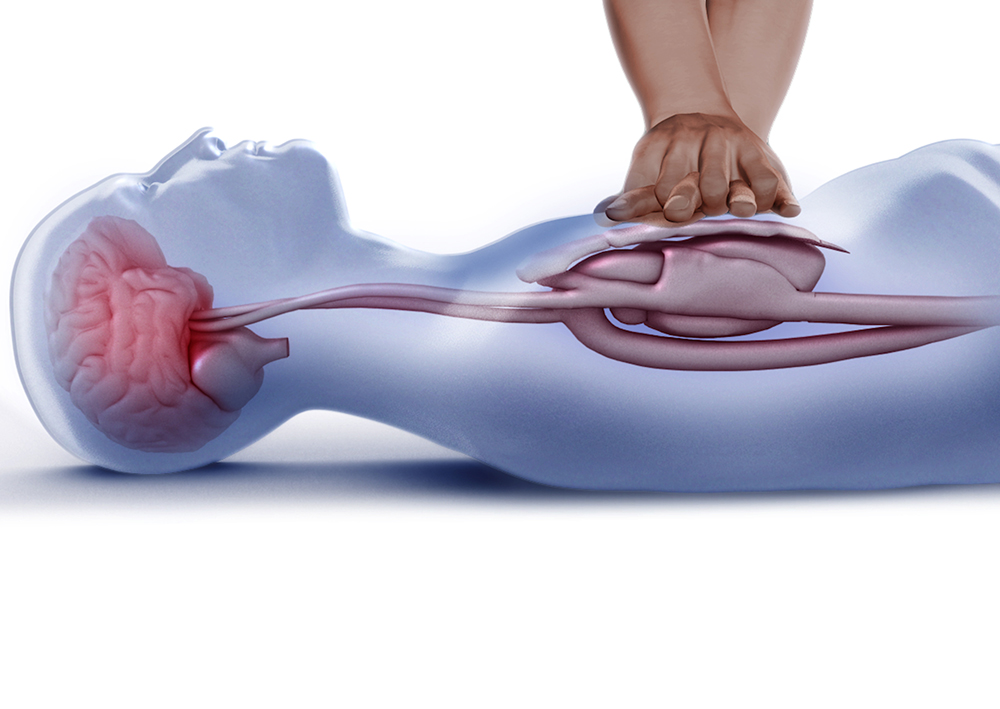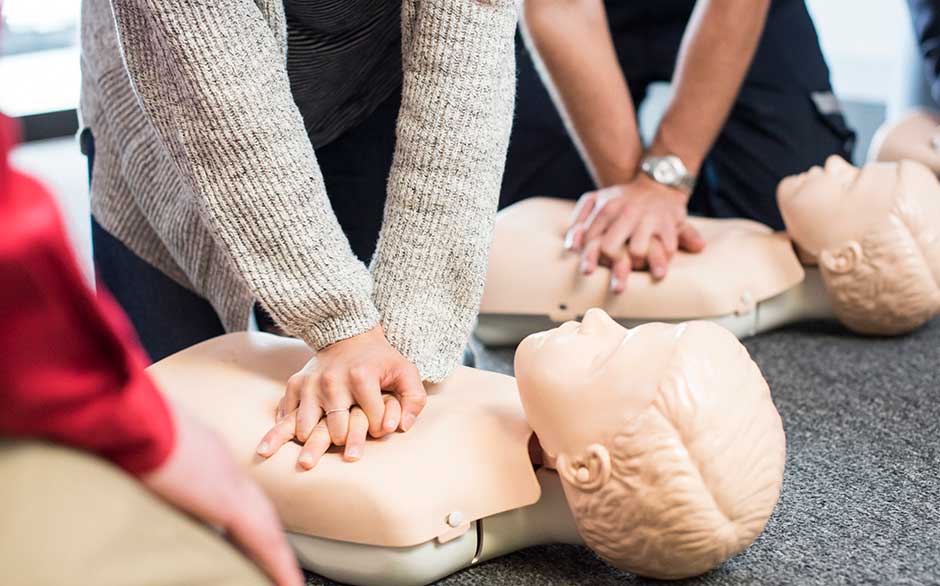Are you interested in learning CPR and First Aid? Knowing how to provide lifesaving assistance when faced with an emergency can be the difference between life and death. This guide will help you understand where to start, why it’s important, and how best to prepare yourself for such a situation.
With comprehensive information on what CPR and First Aid techniques are needed in different medical emergencies, this guide aims to equip you with the knowledge required for successful rescue operations. Learn about the types of injuries that require particular treatment methods as well as CPR guidelines so that you’re always ready when an accident or injury happens.
Get informed about easy-to-learn steps along with tips on staying safe while administering first aid care. A better understanding of these life-saving skills could make all the difference!
Understanding the Basics of Cardiopulmonary Resuscitation (CPR)

CPR is a life-saving skill that everyone should learn, and understanding the basics of it is an important first step. When beginning to learn CPR, you need to understand what it does and why it’s necessary.
Cardiopulmonary resuscitation (CPR) is a lifesaving procedure used when someone experiences cardiac arrest or stops breathing normally. It involves chest compressions and mouth-to-mouth breaths to circulate oxygenated blood throughout the body, to restart the heart.
Knowing how to perform CPR properly can be invaluable in emergencies; even if you don’t have any medical training, having basic knowledge about CPR could help save somebody’s life one day. Learning CPR also requires familiarizing yourself with safety protocols such as checking for responsiveness before starting your response, using gloves or other personal protective equipment (PPE), ensuring proper positioning of both rescuer and patient during compression cycles, recognizing signs of shock or injury in patients who are not responding well to treatment efforts, etc. While these procedures may seem overwhelming at first glance, they become easier with practice so make sure you give yourself enough time and practice opportunities before attempting actual rescue scenarios in real-life settings!
What You Need to Know About Basic First Aid Training

Learning basic first aid is an important skill for everyone. It can help you save lives, provide comfort to those in need and make a real difference when someone needs medical attention in an emergency.
Knowing the basics of CPR and first aid can help you feel more confident in responding to any situation that arises. There are many different types of training available, so it’s important to understand what each type covers before making a decision on which one is right for you.
In-person classes offer hands-on practice with guidance from experienced instructors. They may also include interactive activities or videos to supplement the learning process and ensure comprehension of key concepts.
Online courses are another option that allows self-paced learning and access to additional resources such as printable study guides or quizzes for review purposes. While these don’t provide direct instruction, they do allow learners to familiarize themselves with the material at their own pace before attending an in-person class or taking a certification exam.
Whichever method you choose, there are some essential components every first aid course should cover: safety protocols, how to assess emergencies quickly and accurately; administering cardiopulmonary resuscitation (CPR); controlling bleeding; recognizing signs of shock; treating burns; bandaging injuries; using personal protective equipment like gloves and masks correctly; applying splints and slings where necessary; providing basic life support until professional assistance arrives; and understanding when not to intervene medically but rather call 911 immediately instead. Knowing all these topics will put anyone ahead if ever faced with having to perform life-saving measures!
Locating a Certified CPR/First Aid Instructor Near You

Knowing how to perform CPR and First Aid can be the difference between life and death. But, locating a certified instructor near you who can provide the necessary instruction isn’t always easy.
That’s why we created this guide: to help you find qualified instructors in your area and begin your journey toward becoming a certified CPR/First Aid provider. Well, start by providing an overview of what it means to become certified in CPR/First Aid, followed by tips for finding local classes that meet your needs.
Finally, we’ll discuss the importance of staying up-to-date on certification so you have confidence in performing lifesaving techniques when they are needed most. So where do you begin? The first step is locating a qualified instructor nearby who offers courses that meet certifying standards established by organizations like American Red Cross or American Heart Association (AHA). You may also want to consider researching online options as many schools offer virtual training programs if there arent any convenient physical locations available.
Keep in mind that while these online courses might not be as comprehensive as hands-on instruction, they still provide valuable information about CPR/First Aid practices which could prove invaluable when seconds count during an emergency. Once you’ve found a class or program that fits with your schedule and budget, make sure all materials covered will adhere to current best practice guidelines issued by AHA or other recognized organization(s) so you receive appropriate training from experienced professionals who understand the latest industry protocols related to administering care during medical emergencies.
Additionally, confirm whether completion of coursework will result in receiving officially recognized certification – often referred to as a “CPR Card” – once successful completion has been achieved; many employers require proof of such official documentation before hiring applicants for positions requiring knowledge of lifesaving procedures specifically related working with vulnerable populations like children and elderly individuals living alone without direct family support networks nearby them at all times throughout day/night hours, etc.
Tips for Making the Most of Your Classroom Experience

When making the most of your classroom experience, there are a few key tips to keep in mind. First, be sure to arrive prepared and on time.
Have all the materials you need for class and take notes as you go along. Make sure to ask questions if something isn’t clear or if more information is needed.
Second, take advantage of any role-playing activities that may be offered in the course; these will help you understand CPR and first aid concepts more thoroughly. Third, look for ways to practice outside of class; it can make a big difference when it comes time for testing and certification exams.
Finally, find a buddy or study group who can review material together before tests or exams – this often helps with understanding complex topics better! By following these simple tips you’ll have an easier time mastering CPR and first aid skills – whether in the classroom or beyond.
Resources for Keeping Your Skills Up-To-Date

Keeping your First Aid and CPR skills up-to-date is essential. Taking the time to refresh your knowledge of these lifesaving techniques can make a big difference in an emergency.
There are several resources available online that provide comprehensive learning material for both beginners and experienced practitioners. For starters, many local hospitals or community centers offer courses on basic first aid and CPR instruction.
These classes can be a great way to learn the latest techniques from certified experts in the field while also getting hands-on practice with different types of equipment used in medical emergencies. For those who cannot attend courses due to time restrictions, there are plenty of online tutorials and videos that offer step-by-step instructions for performing essential treatments such as cardiopulmonary resuscitation (CPR). If you’re looking for more advanced training, consider enrolling in specialized workshops or certification programs offered by renowned organizations like The American Red Cross or St John Ambulance Brigade – both have extensive experience providing healthcare education around the world.
Not only will you gain valuable knowledge about how to handle specific scenarios but you’ll also become eligible for insurance discounts if you have valid certifications on hand during an emergency. Finally, don’t forget to take advantage of free materials available through government websites such as the Health Canadas injury prevention section which provides detailed information regarding common safety protocols when it comes to dealing with various medical issues and injuries.
By familiarizing yourself with their guidelines, procedures, and tips you’ll stay sharp when it comes to taking care of yourself and those around you should an incident arise requiring immediate attention.
Conclusion

Learning CPR and First Aid is an important skill that can help save a life. Unfortunately, many don’t have the time or resources to attend classes to learn these skills.
Thankfully, MyCPR NOW offers convenient online courses that provide the necessary training for people to become certified in CPR and First Aid. With these courses, you’ll gain the knowledge needed to administer proper care during medical emergencies so you can make sure those around you stay safe in any situation.
Plus, with MyCPR NOW’s comprehensive course materials and easy-to-follow instructions, it has never been easier to learn this life-saving skill quickly and conveniently from your own home!

